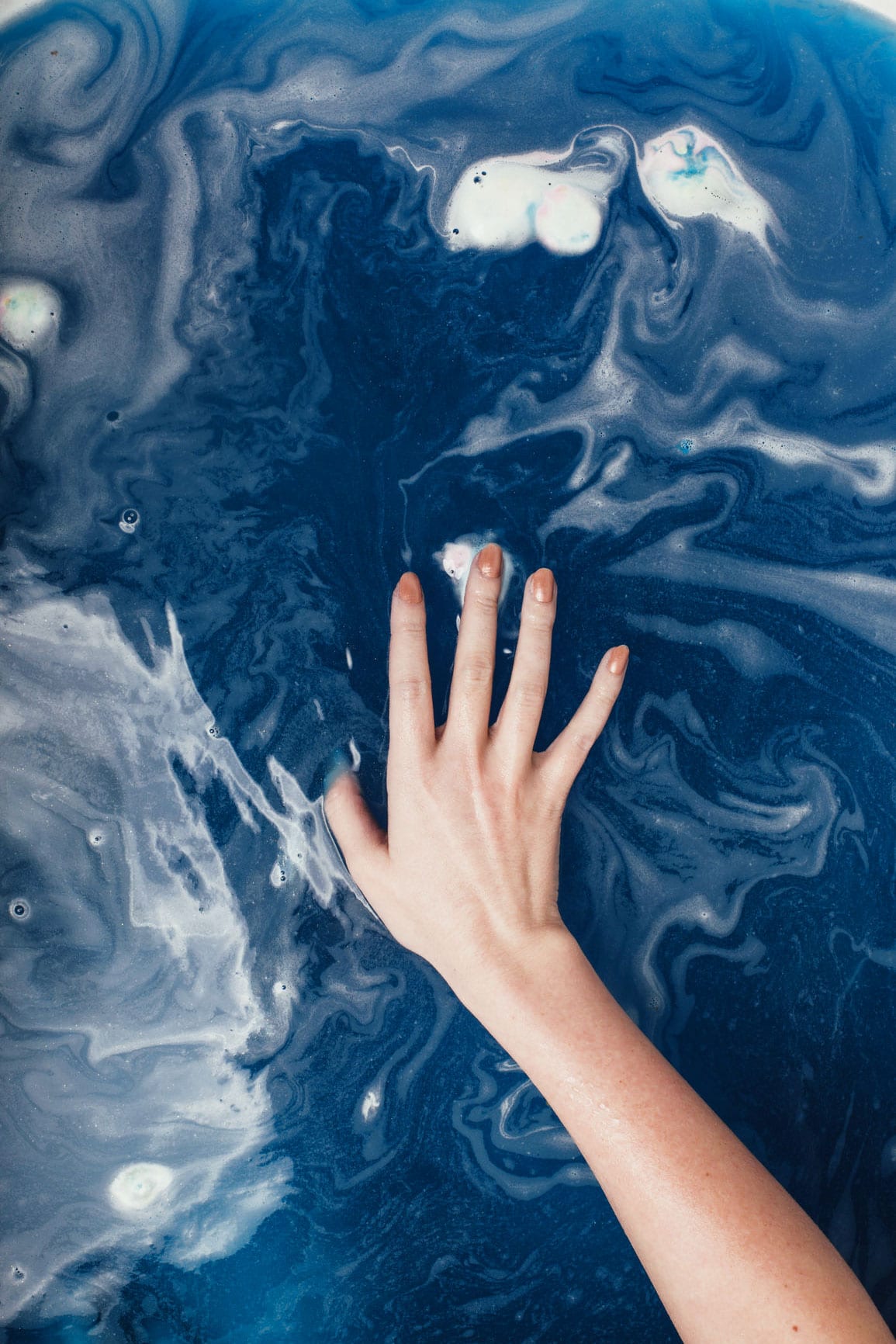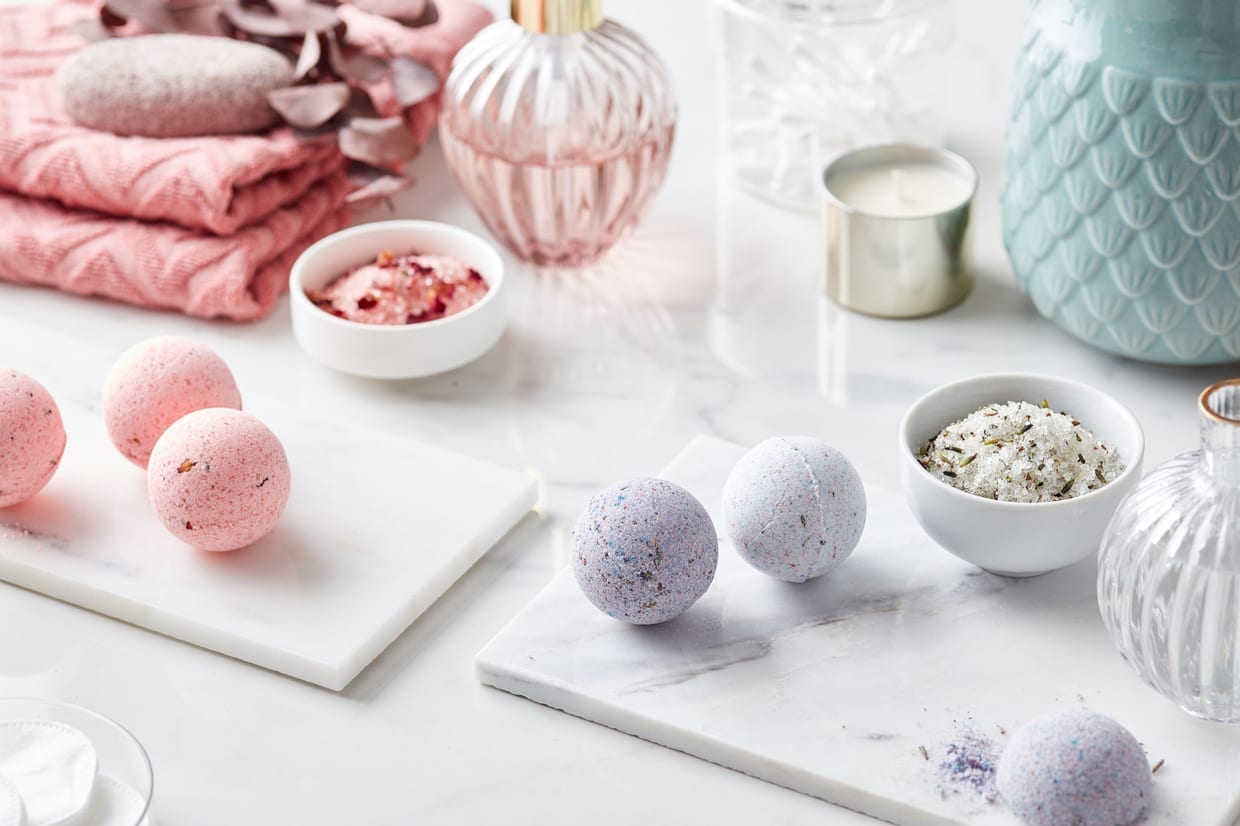The word self-care is thrown around so frequently and with such gusto that you often forget its true meaning. The little things that are crucial for our emotional and mental wellbeing: getting enough sleep, spending time with those who energize you, showing yourself kindness, etc. The cliché we constantly see around social media: a young woman lying in colorful bathwater, wine glass in hand, captioning her Snapchat, “hotdog or legs.”
As these two parallels of self-care often coincide, it is hard to separate that which brings you joy and that which drains your bank account. And what is with that colorful water constantly flooding our feeds? The culprit: a well-timed, often cheeky, bath bomb.
But how did we as a society allow bath bombs to become the poster child of self-care? What led us to trust these colorful, fruit-scented grenades? On Instagram, #bathbomb has over 2.1 million posts — it is the perfect platform to showcase these colorful explosions. And, if you think about it, this number makes sense when you factor in how impossible it is for us to unwind on this day and age. Thanks to smartphones, we are connected 24/7; bathtubs are the one remaining sacred space in our homes where we are allowed to do nothing for 30 minutes. A gadget-free zone (unless you are taking said Snapchat), and an inexpensive — if not free — a retreat from everyday life. Our inner child is free to come out as we lie in the tub nostalgic over the Barbie bubble baths we took as children.

But is our favorite relaxing pastime doing us more harm than good? We asked Debra Jaliman, M.D., a board-certified dermatologist and author of “Skin Rules: Trade Secrets From a Top New York Dermatologist” a few important questions to get to the bottom of this dilemma.
So, what exactly are we lying down in? According to Jaliman, “baking soda, citric acid and cornstarch are the primary ingredients of a bath bomb.” Citric acid, which is found in anti-aging products, loosens up damaged skin so that younger skin can replace it. It is also what leads to that fizzy sensation in the tub.
Then, there are additives to get fragrance and color. “The color of the bath bombs can come from the essential oils used but they can also come from artificial sources,” she says. Essential oils, when inhaled, allow for aromatherapy to take place. Depending on the scent, aromatherapy helps lower blood pressure, anxiety and stress. In the mornings, citrus scents like lemon, grapefruit and orange are recommended for their ability to energize you and positively affect your mood. Whereas, scents such as lavender, neroli, ylang-ylang and chamomile are great for dozing off to sleep.
Aromatherapy benefits aside, these explosive beauties do not come without risk. While I personally have never experienced any negative reactions, Jaliman says people could experience red and itchy skin after using a bath bomb. “Many of these bath bombs contain colorings and fragrances,” she says. “Bath bombs are made to look pretty and smell really nice, [but] to get them to be so fragrant and look so nice, ingredients that may cause skin reactions are normally added.”
So, what should you be looking for when planning your next bath explosion? “When scanning the ingredient list, we should steer clear of “sulfates, phthalates [and] glitter,” she says.
Yes, you read that right: glitter. As someone who grew up with an unnatural obsession with glitter, the appeal of sparkly bath bombs is not lost on me. However, all that glitters is not gold. According to Jaliman, “artificial dyes and glitter used in bath bombs are generally unsafe for your skin. Glitter can irritate the skin,” she says. “Glitter lingers for days and is hard to get rid of. You don’t want glitter near your vagina or other sensitive areas such as the eyes.”

And speaking of women’s health, Jaliman says that just like the possible skin reactions, bath bombs may not be kind to your vagina. “If you’re sitting in a bath where you have dropped a bath bomb, you are exposing yourself to vaginal infections and urinary tract infections. The chemicals used in these bath bombs can throw off the pH of your vagina,” she says.
While this information sounds bleak, there is no need to cry just yet. Simply break up with your glittery, quirky-shaped bath bomb and make the switch to a natural and organic option. Natural bath bombs come with an array of benefits for both your skin and mental wellbeing. Jaliman recommends this natural, non-toxic bath bomb made in California that is safe for children and people with sensitive skin. It contains both shea butter and cocoa butter, both of which are known for their moisturizing properties. “A natural one usually will not contain synthetic fragrances, artificial dyes, [or] ingredients that are skin-drying,” she says. “These won’t look as pretty, but [they] will be safer.”
We only recommend products we have independently researched, tested and loved. If you purchase a product found through our links, Sunday Edit may earn an affiliate commission.







